Lexus ES vs Volvo EX90 – Differences & prices compared
Compare performance, boot space, consumption and price in one view.
Find out now: which car is the better choice for you – Lexus ES or Volvo EX90?
The Lexus ES (Sedan) comes with a Full Hybrid engine and Automatic transmission. In comparison, the Volvo EX90 (SUV) features a Electric engine with Automatic transmission.
When it comes to boot capacity, the Lexus ES offers 454 L, while the Volvo EX90 provides 647 L – depending on how much space you need. If you’re looking for more power, decide whether the 218 HP of the Lexus ES or the 517 HP of the Volvo EX90 suits your needs better.
In terms of consumption, the values are 5.10 L per 100 km for the Lexus ES, and 18.10 kWh for the Volvo EX90.
Price-wise, the Lexus ES starts at 46600 £, while the Volvo EX90 is available from 71700 £. Compare all the details and find out which model fits your lifestyle best!
Lexus ES
The Lexus ES represents a blend of luxury and comfort, offering a smooth driving experience that is characteristic of the brand. With its elegant design and meticulously crafted interior, it provides a serene environment for both driver and passengers. The inclusion of advanced safety features and cutting-edge technology enhances its appeal, ensuring that every journey is not only enjoyable but also secure.
details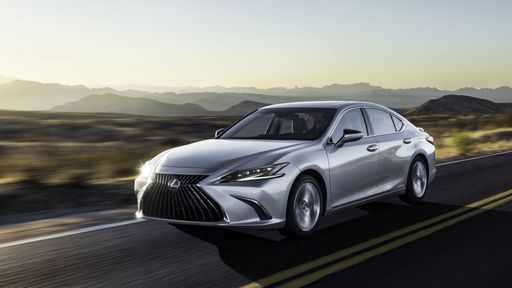 @ toyota-media.de
@ toyota-media.de
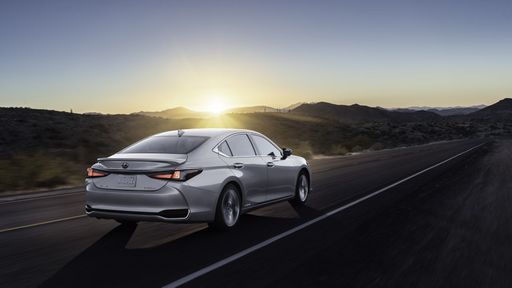 @ toyota-media.de
@ toyota-media.de
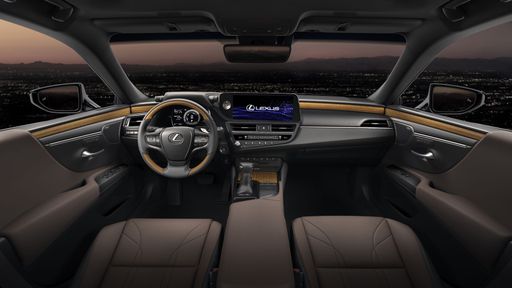 @ toyota-media.de
@ toyota-media.de
Volvo EX90
The Volvo EX90 represents a new era of luxury electric vehicles, combining sophisticated design with cutting-edge technology. Its interior offers a serene environment, enhanced by premium materials and a state-of-the-art infotainment system that ensures both comfort and connectivity. Safety remains paramount, with the EX90 featuring advanced driver assistance features to provide peace of mind on every journey.
details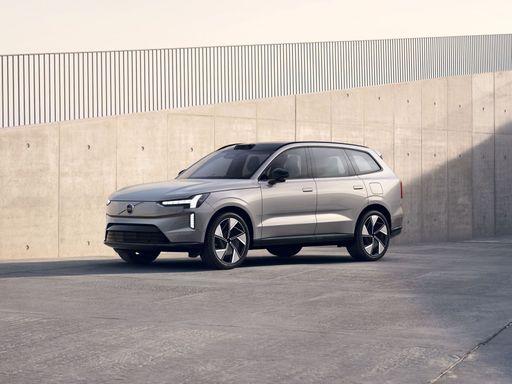 @ media.volvocars.com
@ media.volvocars.com
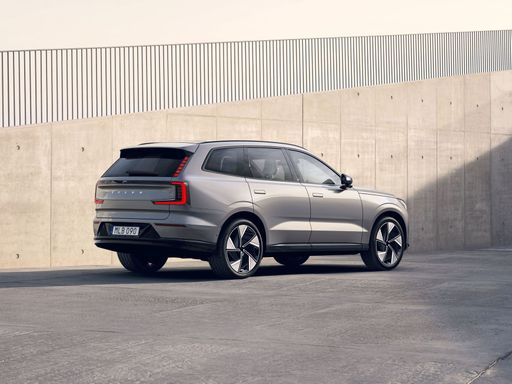 @ media.volvocars.com
@ media.volvocars.com
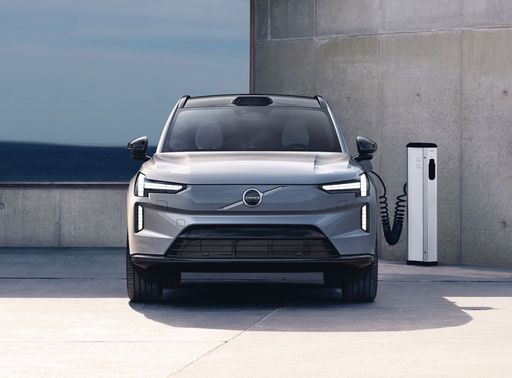 @ media.volvocars.com
@ media.volvocars.com
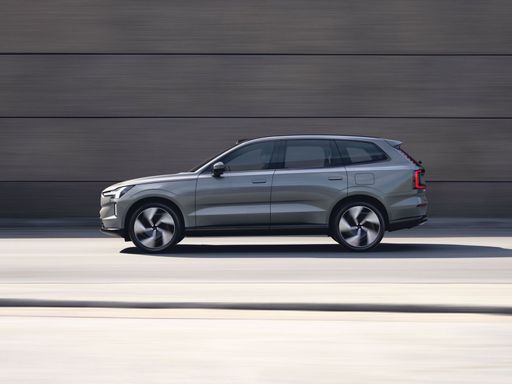 @ media.volvocars.com
@ media.volvocars.com
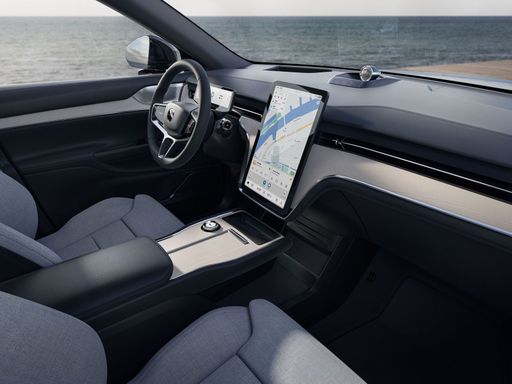 @ media.volvocars.com
@ media.volvocars.com
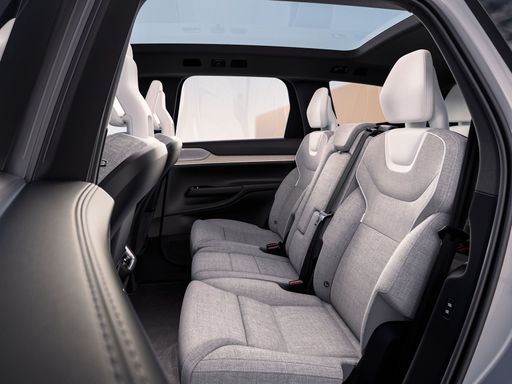 @ media.volvocars.com
@ media.volvocars.com

|

|
|
|
|
Costs and Consumption |
|
|---|---|
|
Price
46600 - 59300 £
|
Price
71700 - 92100 £
|
|
Consumption L/100km
5.10 L
|
Consumption L/100km
-
|
|
Consumption kWh/100km
-
|
Consumption kWh/100km
18.1 - 20.3 kWh
|
|
Electric Range
-
|
Electric Range
624 - 632 km
|
|
Battery Capacity
-
|
Battery Capacity
100 - 107 kWh
|
|
co2
115 g/km
|
co2
0 g/km
|
|
Fuel tank capacity
50 L
|
Fuel tank capacity
-
|
Dimensions and Body |
|
|---|---|
|
Body Type
Sedan
|
Body Type
SUV
|
|
Seats
5
|
Seats
5 - 7
|
|
Doors
4
|
Doors
5
|
|
Curb weight
1680 kg
|
Curb weight
2580 - 2780 kg
|
|
Trunk capacity
454 L
|
Trunk capacity
324 - 647 L
|
|
Length
4975 mm
|
Length
5037 mm
|
|
Width
1865 mm
|
Width
1964 mm
|
|
Height
1445 mm
|
Height
1744 mm
|
|
Payload
470 kg
|
Payload
420 - 610 kg
|
Engine and Performance |
|
|---|---|
|
Engine Type
Full Hybrid
|
Engine Type
Electric
|
|
Transmission
Automatic
|
Transmission
Automatic
|
|
Transmission Detail
-
|
Transmission Detail
Reduction Gearbox
|
|
Drive Type
Front-Wheel Drive
|
Drive Type
Rear-Wheel Drive, All-Wheel Drive
|
|
Power HP
218 HP
|
Power HP
279 - 517 HP
|
|
Acceleration 0-100km/h
8.90 s
|
Acceleration 0-100km/h
4.9 - 8.4 s
|
|
Max Speed
180 km/h
|
Max Speed
180 km/h
|
|
Torque
-
|
Torque
490 - 910 Nm
|
|
Number of Cylinders
4
|
Number of Cylinders
-
|
|
Power kW
160 kW
|
Power kW
205 - 380 kW
|
|
Engine capacity
2487 cm3
|
Engine capacity
-
|
General |
|
|---|---|
|
Model Year
2024
|
Model Year
2024 - 2025
|
|
CO2 Efficiency Class
C
|
CO2 Efficiency Class
A
|
|
Brand
Lexus
|
Brand
Volvo
|
Lexus ES
Explore the Alluring Elegance of the Lexus ES
The Lexus ES continues to uphold its reputation as a beacon of luxury and innovation in the automotive world. Known for its graceful design and premium feel, the ES series offers an impressive blend of performance and efficiency. With a focus on technical prowess and sustainability, this model is a testament to Lexus's commitment to excellence.
Performance and Efficiency: A Seamless Blend
At the heart of the Lexus ES is its full-hybrid technology. The 218 PS powertrain, featuring a 4-cylinder engine, harmoniously integrates a combustion engine with an electric motor to provide a remarkable drive. The ES achieves its impressive power output of 160 kW while maintaining a commendable fuel consumption of 5.1 L/100 km. This balance between power and efficiency is manifested in its acceleration from 0 to 100 km/h in just 8.9 seconds, powering seamlessly through a cost-effective CVT-gearbox with front-wheel drive. Despite its athletic capabilities, the ES remains well within the bounds of responsible emissions with a CO2 output rated at 115 g/km.
Design and Comfort: A Statement of Luxury
The Lexus ES's exterior is crafted as a testament to sophistication. Its sleek silhouette measures 4975 mm in length, 1865 mm in width, and 1445 mm in height, with a striking aesthetics that demands attention. The interior offers spacious comfort with seating for five, highlighted by high-quality materials and meticulous attention to detail. Additionally, the boot space offers a generous 454 litres capacity, ensuring practicality is not compromised.
Technological Advancements and Features
Equipped with the latest in automotive technology, the Lexus ES features a suite of advanced driver-assistance systems for enhanced safety and convenience. From its responsive infotainment system to the intuitive controls, each feature has been designed with the driver in mind. For those seeking variety, the car is available in several trim levels including the Automatik, Business Edition Automatik, Executive Automatik, and Luxury Automatik, offering a tailored experience for every discerning driver.
Cost of Ownership
With prices ranging from €54,350 to €69,200, the Lexus ES provides a competitive edge in the luxury segment with its multitude of features. The running costs are also reasonable, with expense estimates ranging from €1,289 to €1,497 per month and a cost per kilometre between 51.6 and 59.9 cents. This cost efficiency makes it a feasible choice for those looking to balance luxury with practicality.
Conclusion: A Hybrid of Innovation and Style
The Lexus ES stands as a prime example of how hybrid technology can transform the driving experience, merging the thrill of performance with the benefits of fuel efficiency. With its state-of-the-art features and impeccable build, the ES is a remarkable vehicle for those who seek luxury and innovation on the road.
Volvo EX90
The New Volvo EX90: A Leap into the Future of Automobiles
The Volvo EX90 marks a significant step forward in automotive technology and design. As part of Volvo's commitment to sustainability and performance, this all-electric SUV combines cutting-edge technology with the brand’s renowned safety and reliability. Let's dive into the technical details and innovations that make the Volvo EX90 a standout in its class.
Performance and Range: Power Meets Efficiency
The Volvo EX90 offers a range of powertrains, catering to various performance preferences. With power outputs ranging from 279 to 517 PS, the EX90 ensures robust driving dynamics regardless of the selected variant. The vehicle's electric efficiency is underscored by consumption figures between 19.9 and 20.8 kWh/100 km, providing an impressive electric range of up to 614 km on a single charge.
The EX90's battery capacity, ranging from 101 to 107 kWh, is harmoniously paired with its drivetrain configurations, available in both rear-wheel and all-wheel drive models. These options allow a balance between efficiency and driving pleasure, with acceleration from 0-100 km/h in as little as 4.9 seconds.
Innovative Technologies for a Safer Drive
Volvo has always been synonymous with safety, and the EX90 is no exception. Equipped with advanced driver assistance systems, the vehicle includes features such as adaptive cruise control, lane keeping assistance, and a 360-degree camera system. These technologies work together to enhance comfort and security on the road.
Moreover, the EX90 utilises LiDAR technology, enabling it to detect and respond to the surrounding environment more accurately. This technology is pivotal in Volvo's ambition to make its cars safer and is a step toward fully autonomous driving.
Interior Elegance: Where Comfort Meets Functionality
The interior of the Volvo EX90 is a sanctuary of luxury and innovation. Available in four different trims, including the Core, Plus, and Ultra variations, it promises comfort and versatility, seating between five and seven passengers.
The cabin features a sleek design with a central touchscreen that integrates Volvo's latest infotainment system, ensuring connectivity and entertainment are at your fingertips. High-quality materials, meticulous craftsmanship, and thoughtful ergonomics create an inviting atmosphere for both driver and passengers.
Sustainability: A Commitment to Reducing Emissions
As part of Volvo’s sustainability mission, the EX90 underscores the brand's goal of reducing its carbon footprint. With zero tailpipe emissions, the EX90 stands as a testament to Volvo’s eco-conscious engineering. The car's CO2 efficiency justifies its A-grade in environmental standards.
Volvo's dedication to sustainable materials is evident in the EX90's interior, where recycled content is seamlessly integrated into its luxurious design, offering an eco-friendly yet sophisticated driving experience.
Conclusion: The Future is Electric
The Volvo EX90 is much more than just an electric vehicle; it's a glimpse into the future of sustainable mobility. By marrying performance with advanced safety features and a commitment to environmental responsibility, the EX90 sets a benchmark for what the modern SUV can be. For drivers looking to invest in a vehicle that's both future-ready and grounded in safety, the Volvo EX90 emerges as a compelling choice.
Which drive types are available for the Lexus ES?
Available as Front-Wheel Drive.
The prices and data displayed are estimates based on German list prices and may vary by country. This information is not legally binding.
